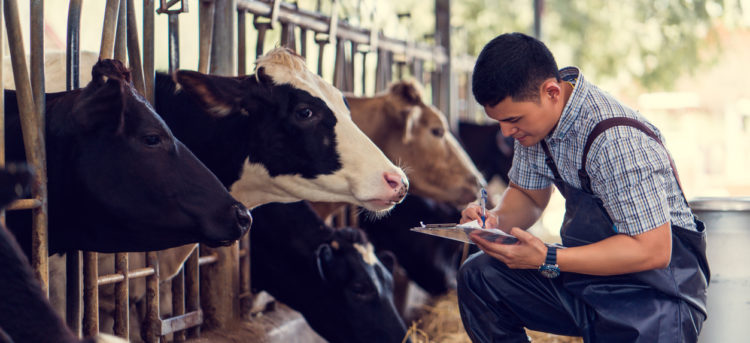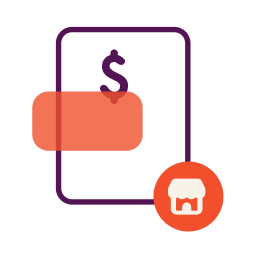Advertiser & Editorial Disclosure
Whether you’re a vibrant, family-owned operation, or you want to try a small crop for the very first time this year, the allure of farming spans generations and is an integral part of our country’s most rewarding history. As the daughter of farmers, I understand what a personal commitment the occupation is; it can be also very, very expensive.
How can a start-up farming operation get rolling when large corporations have a market advantage? What funding options are available for new and small agricultural businesses? While programs change annually, these funding solutions are some of the most popular.
Best Financing Options for Farmers
Extension Agency Resources
Before you ever go searching for a grant or loan, see what local resources are available to you. Use the USDA link to find the Cooperative Extension Agency for your area, and reach out. They get paid to know the ins and outs of what programs are available for farmers of all niches and sizes; they can save you time by telling you about new programs not yet advertised, or resources that may have already exhausted their funding for the year.
1. Sustainable Farming Programs
This PDF gives you a list of ways to get started, considerations to make, as well as a few funding options, including:
- Farm microloans
- First-time farm buyer loans
- Loan Guarantees to connect retiring and beginning farmers
- Farm storage loans
- Transition assistance for conservation (CRP) farmland
- Field border buffers for organic producers
- Risk-management assistance for non-insured crops
- Organic certification cost share
- Crop insurance assistance for beginning farmers
- On-farm research and demonstration grants
Each program will have a different way to apply, sending applicants to one of many farm-program administrators, such as your closest USDA Rural Development Office, NRCS office, crop insurance office, or another entity.
(Note: your local cooperative extension agency should know about all of these programs. If it seems overwhelming, see option #1 and revisit your local extension to get assistance and save time.)
2. Michael Fields Grant Advisory and Resources
This separate, non-profit organization exists to help farmer navigate all of the resources listed above – plus some private opportunities. If your farm is Midwest-based, they may be able to help you cut down on some of the research and red tape and provide you with the details on programs that apply to your unique business situation. They also provide guides for writing a grant proposal, success tips, and mentoring for new farmers.
3. New Veteran Farmer Resources
Many of the programs available to veterans are also covered by the agricultural funding rules for the farming population at large. To find loans and grants specific to new farmers who are also vets, start the search at the USDA veteran website. You’ll see a lot of repeat resources from those mentioned above, but these have a specific mission to support veterans as a unique group.
Which funding is best?
Once you have figure out which funding options to pursue, it’s good to know how these programs work. Most agricultural funding resources are grouped into grants, loans, or subsidies. There are also additional resources, such as free education, discounted supplies or services, and other free inputs. Anything that can reduce the cost of doing business as a farmer should be explored fully. Remember that many programs that existed just last year may have expired. The most popular programs also quickly run out of money.
Grants – Only available to established farmers and not those just starting out, these programs don’t require you to pay the money back but are highly competitive. Expect to apply early and spend a significant amount of time on your proposal. Grants are not a reliable way to plan for funding; consider grants to be a windfall of funds that you can apply to expand or improve your existing processes.
Loans – The most common way for farms to start or expand, loans range from small personal loans of just a few thousand dollars to business-level loans of $50,000 – 500,000. You need to demonstrate your ability to pay back the loan, and – by taking out a large business loan – you are putting your farming operation as collateral. Small operations (the organic backyard homestead) can often get started with a very modest, general-use personal or business loan.
Credit Cards – While cash advances have a high-interest rate and are not generally recommended, funding your farm’s inputs (seed, supplies, insurance) with a business credit card can be an option. Look for competitive card rates and benefits for spending, such as cash-back perks or discounts on things you use often, like fuel.
Crowdfunding – You can use any of the relevant, existing crowdfunding platforms to fund your farm, but there is a new player to the field that’s designed specifically for agricultural businesses. Barnraiser is designed to support small, local, organic, or artisan farms and their products with a community earning model. Sell everything from chocolate to organic beef, raise money for your next expansion, and reach a network of discerning buyers who care where their food comes from.
P2P lending – Getting a loan directly from an individual investor is becoming a popular way to start and grow farms. Kiva is one of the leading platforms combining P2P with crowdfunding, and farmers who complete training through the online portal from Cornell University’s Small Farms program are eligible to take out a Kiva loan at 0% interest. To see if you qualify, visit the Cornell website.
Farming is an incredibly difficult career with benefits that cannot be measured. Feeding the world, enjoying the outdoors, and building a business legacy for the future is rewarding – but also very costly. While many farming endeavors can be modest, costing just $5,000 or less to begin, growth requires capital.
Whether you grow berries, own a co-op, or are getting into hemp or other alternative crops, it’s best to plan every step (including funding) in advance. Research any program thoroughly before applying and build on your knowledge of funding every year to stay competitive in the agricultural business world.
This article was originally written on March 14, 2019 and updated on December 10, 2020.



Have at it! We'd love to hear from you and encourage a lively discussion among our users. Please help us keep our site clean and protect yourself. Refrain from posting overtly promotional content, and avoid disclosing personal information such as bank account or phone numbers.
Reviews Disclosure: The responses below are not provided or commissioned by the credit card, financing and service companies that appear on this site. Responses have not been reviewed, approved or otherwise endorsed by the credit card, financing and service companies and it is not their responsibility to ensure all posts and/or questions are answered.